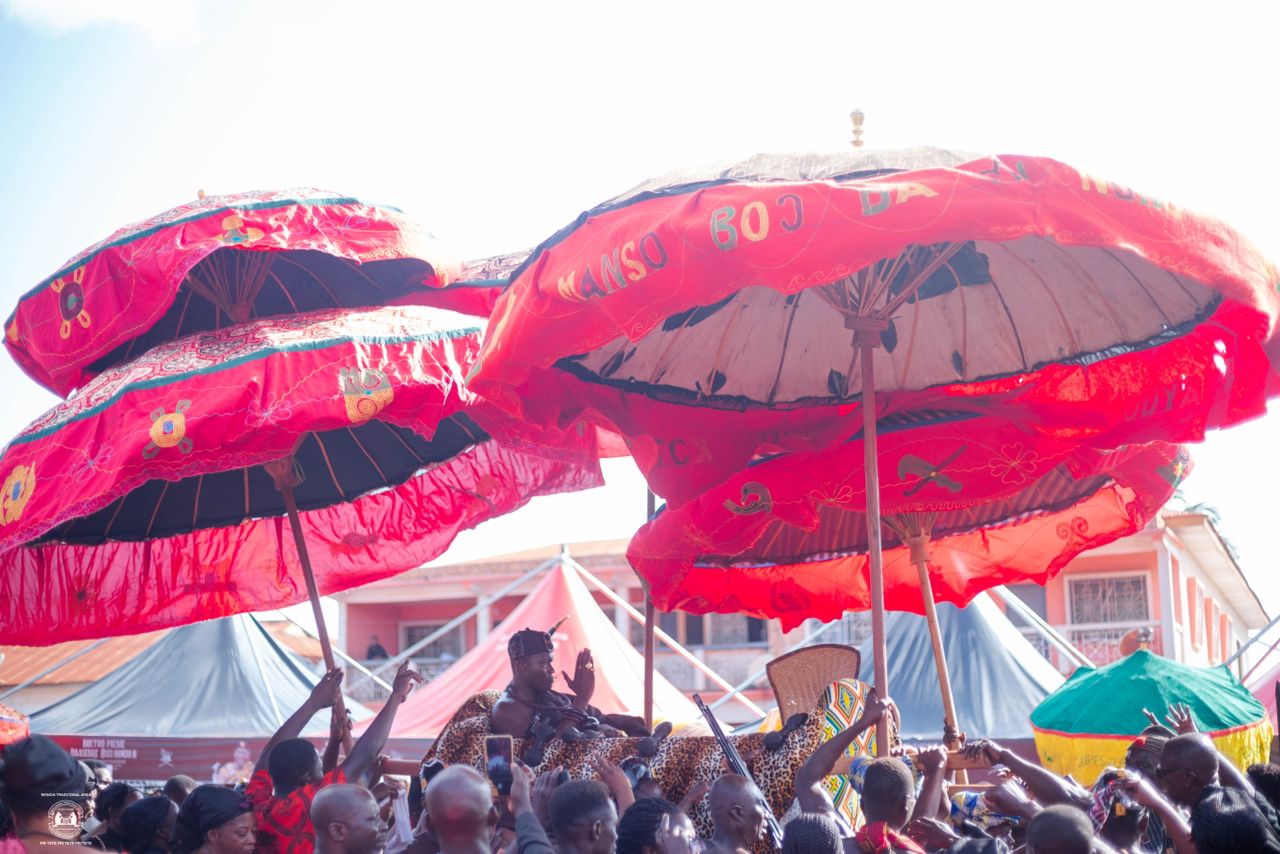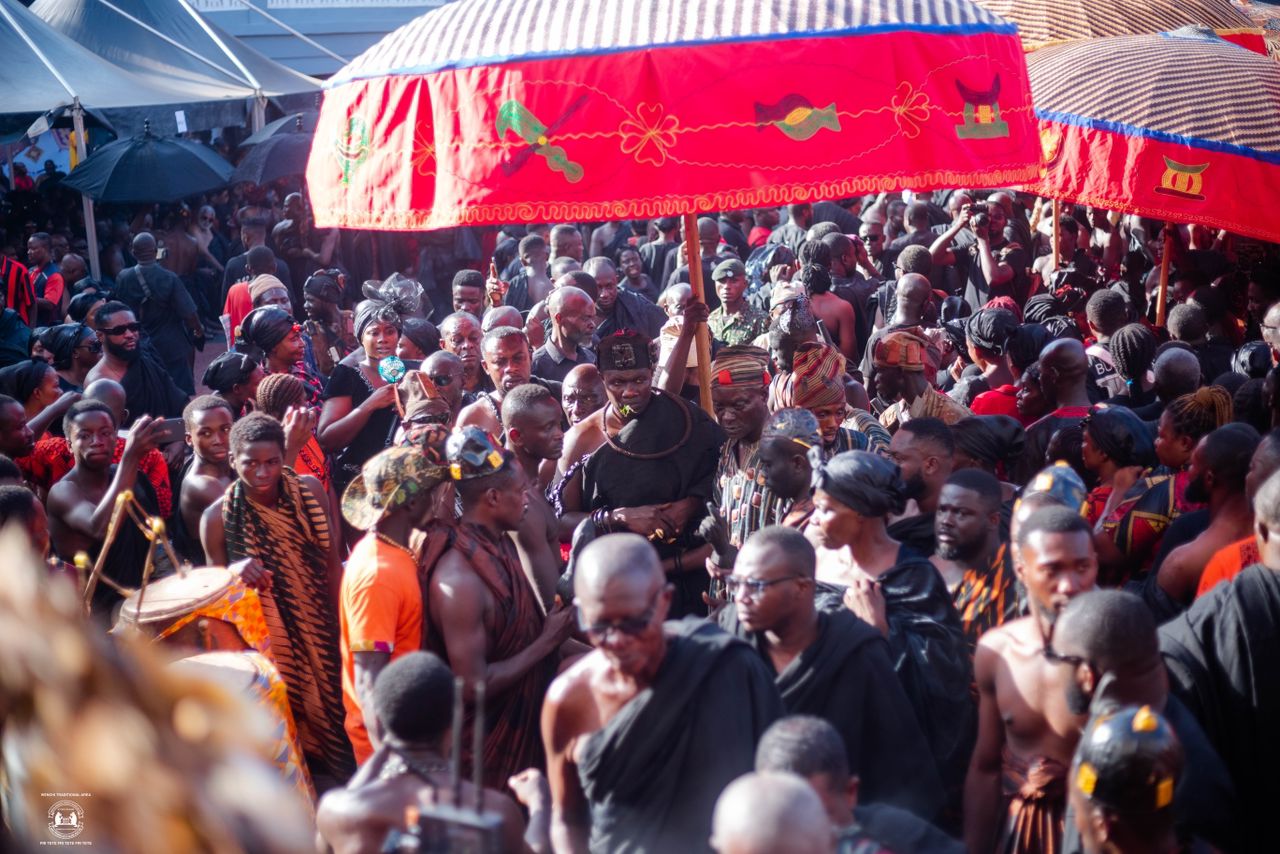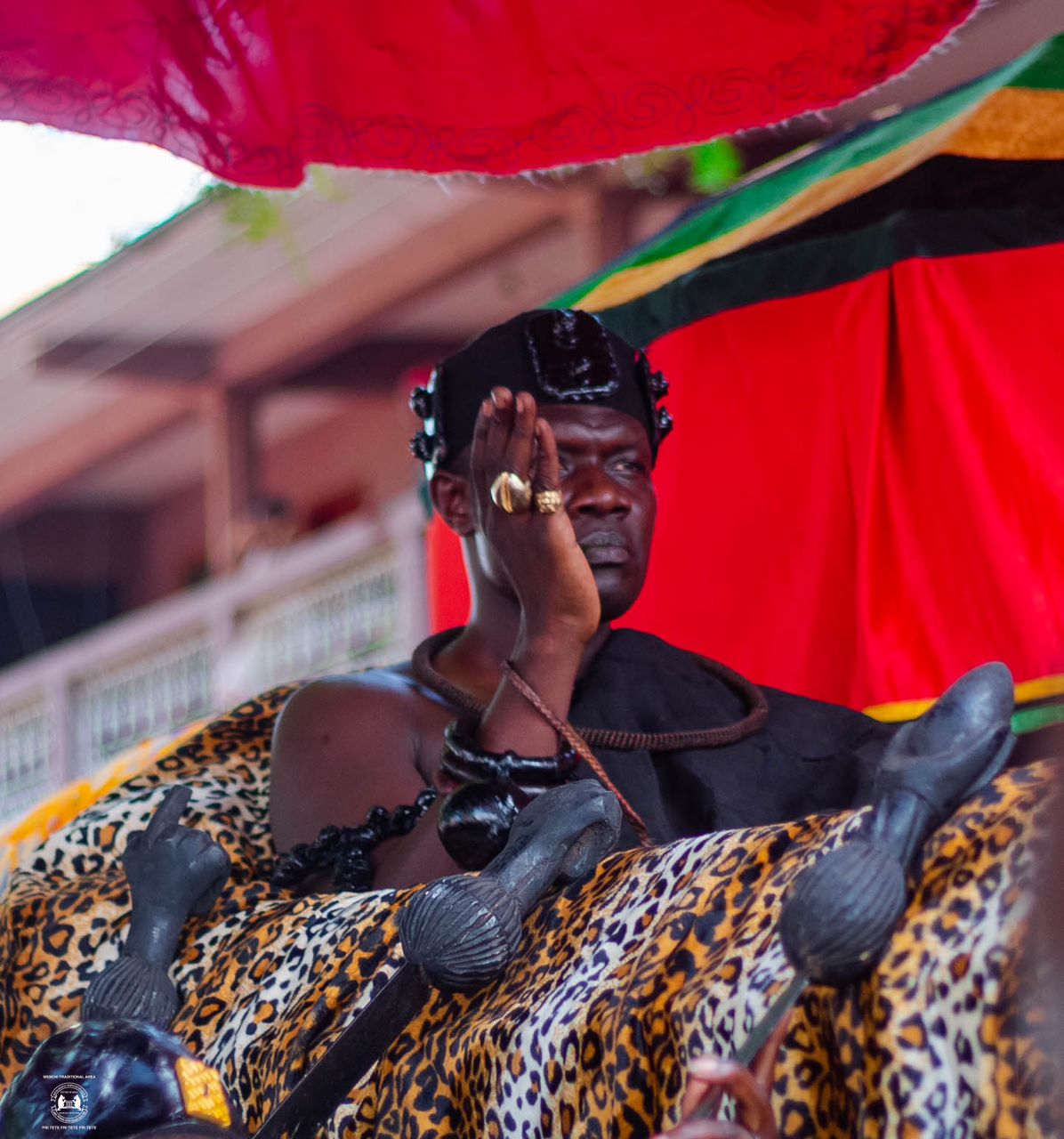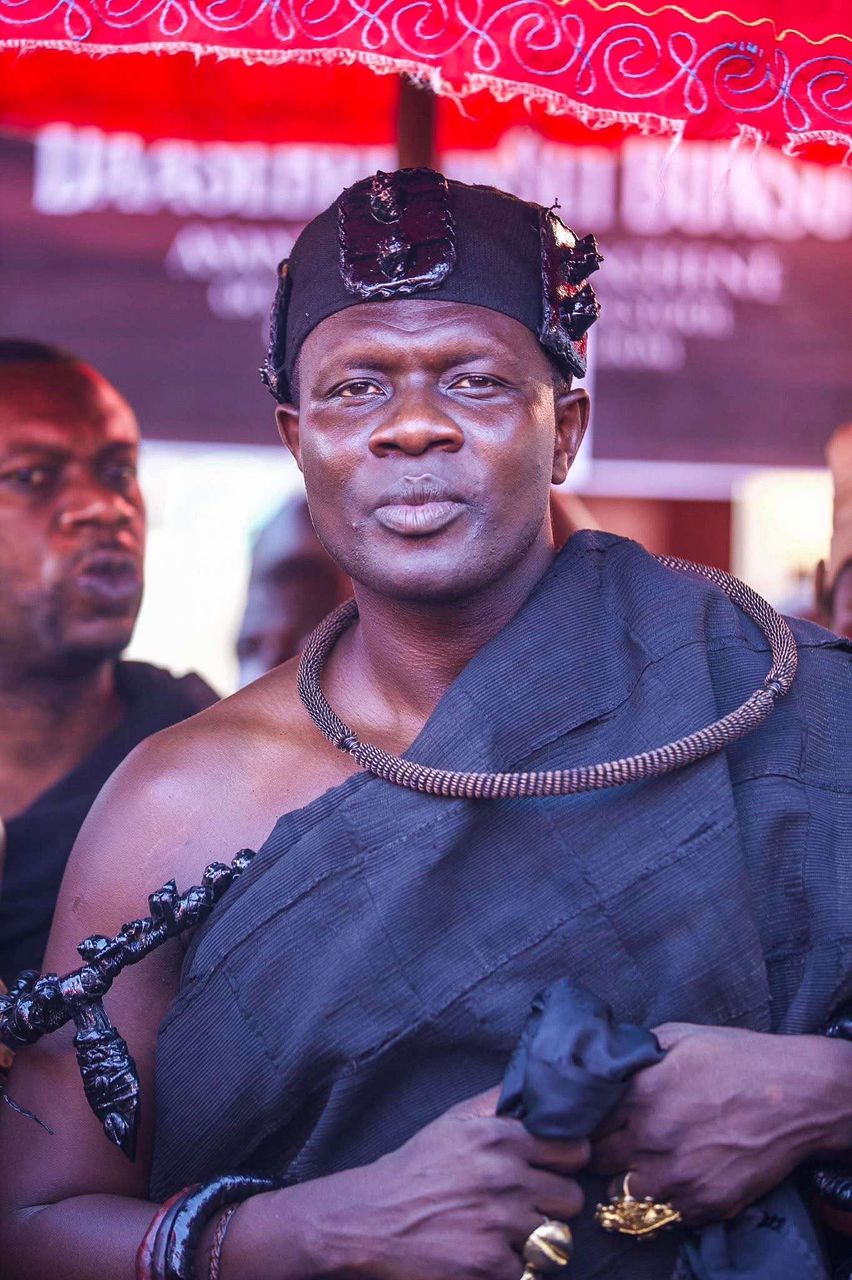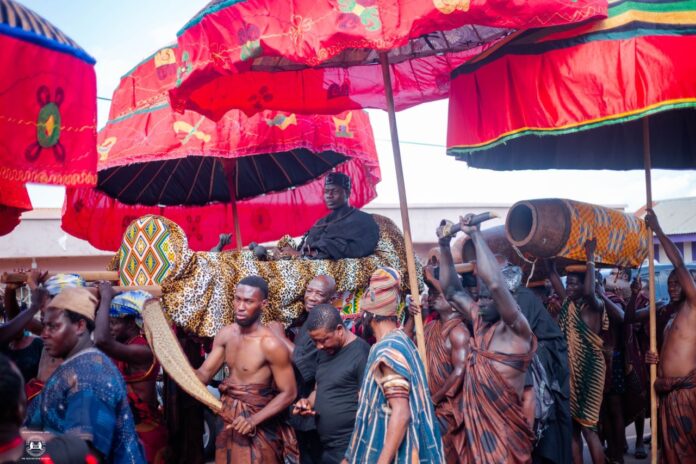The recent appearance of the Asantehene, Otumfuo Osei Tutu II, and the Wenchimanhene, Osagyefo Amoapong Ampem Anye Tabarako III, in palanquins at the funeral of the late Mamponghene, Daasebre Osei Bonsu II, has sparked widespread curiosity.
However, the significance of this grand display of royal tradition is deeply rooted in the lineage and heritage of the Wenchimanhene.
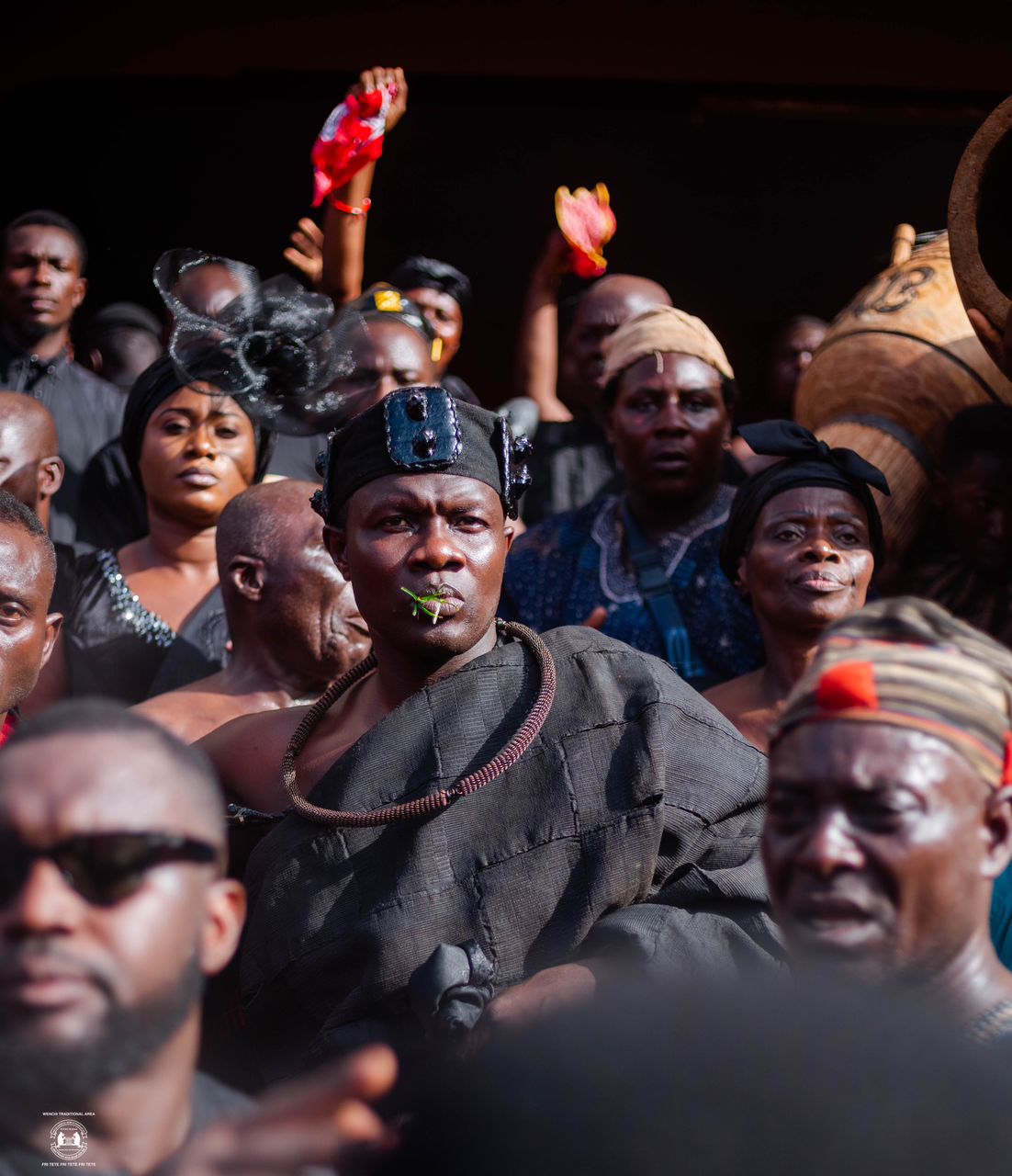
At the center of this story is Victoria Osei Bonsu, mother of the current Wenchimanhene and daughter of the late Asante Mampong Akwamuhene, Oheneba Owusu Afriyie.
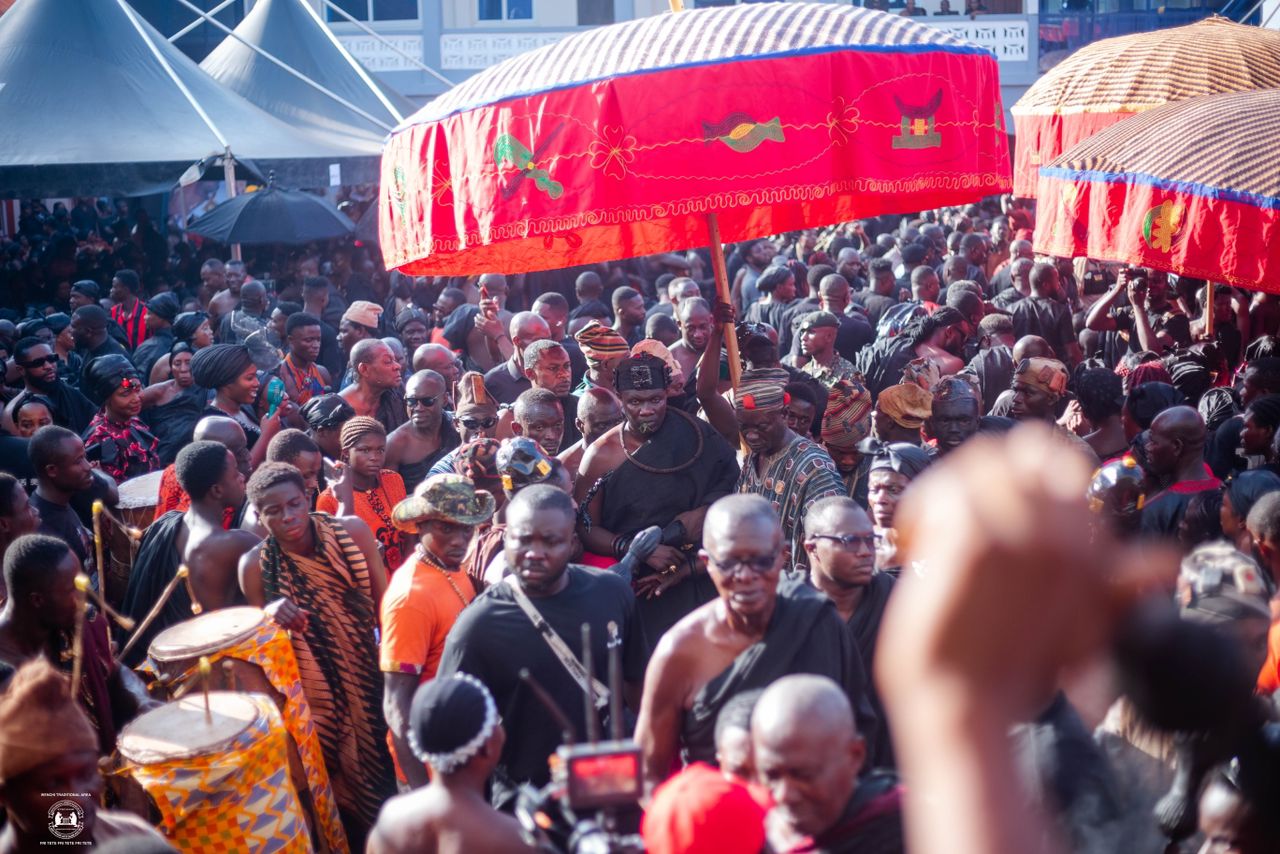
Oheneba Owusu Afriyie was himself the son of Daasebre Osei Bonsu II, who ruled as occupant of the Amaniampong Silver Stool from 1916 to 1930.
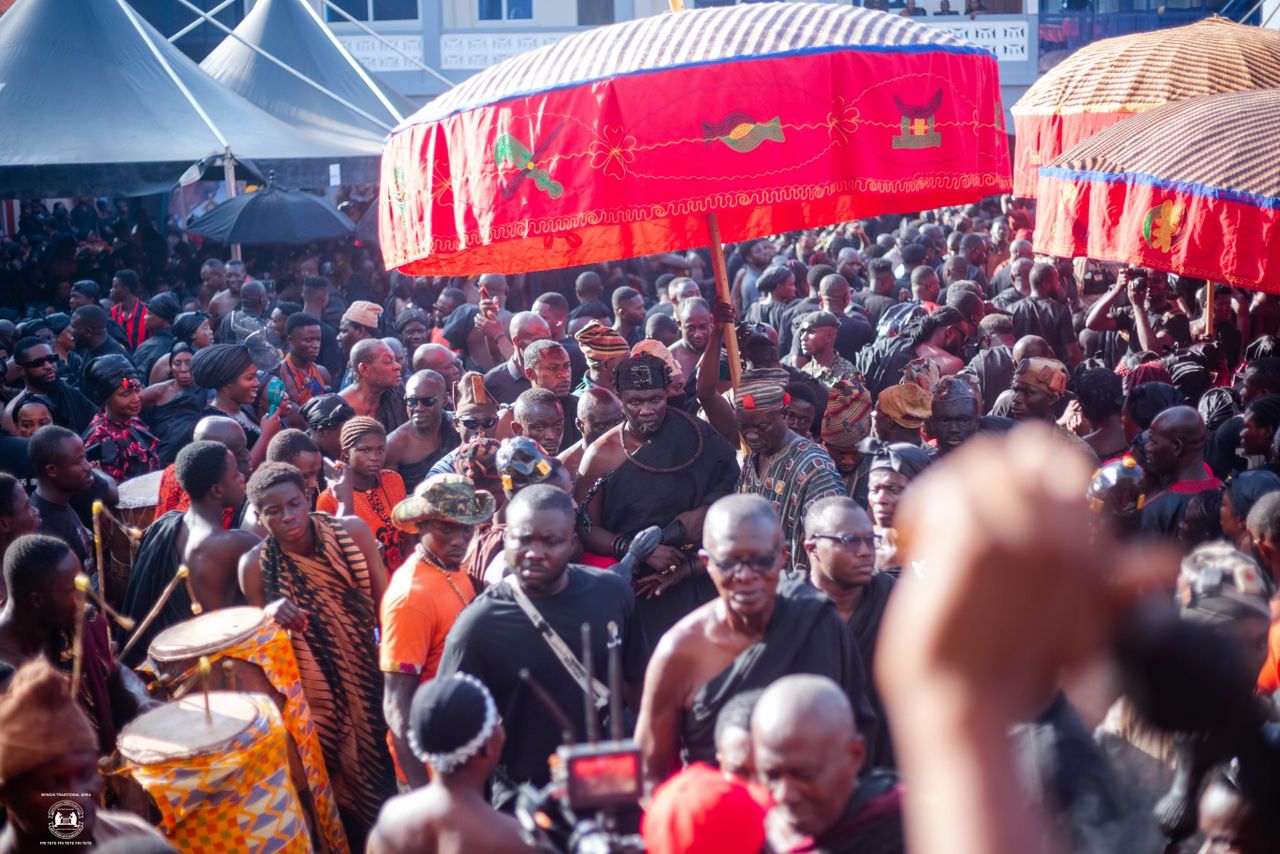
Crucially, the late Akwamuhene, Oheneba Owusu Afriyie, played a pivotal role in the selection of Daasebre Osei Bonsu II to the Silver Stool—further strengthening the familial and traditional ties.
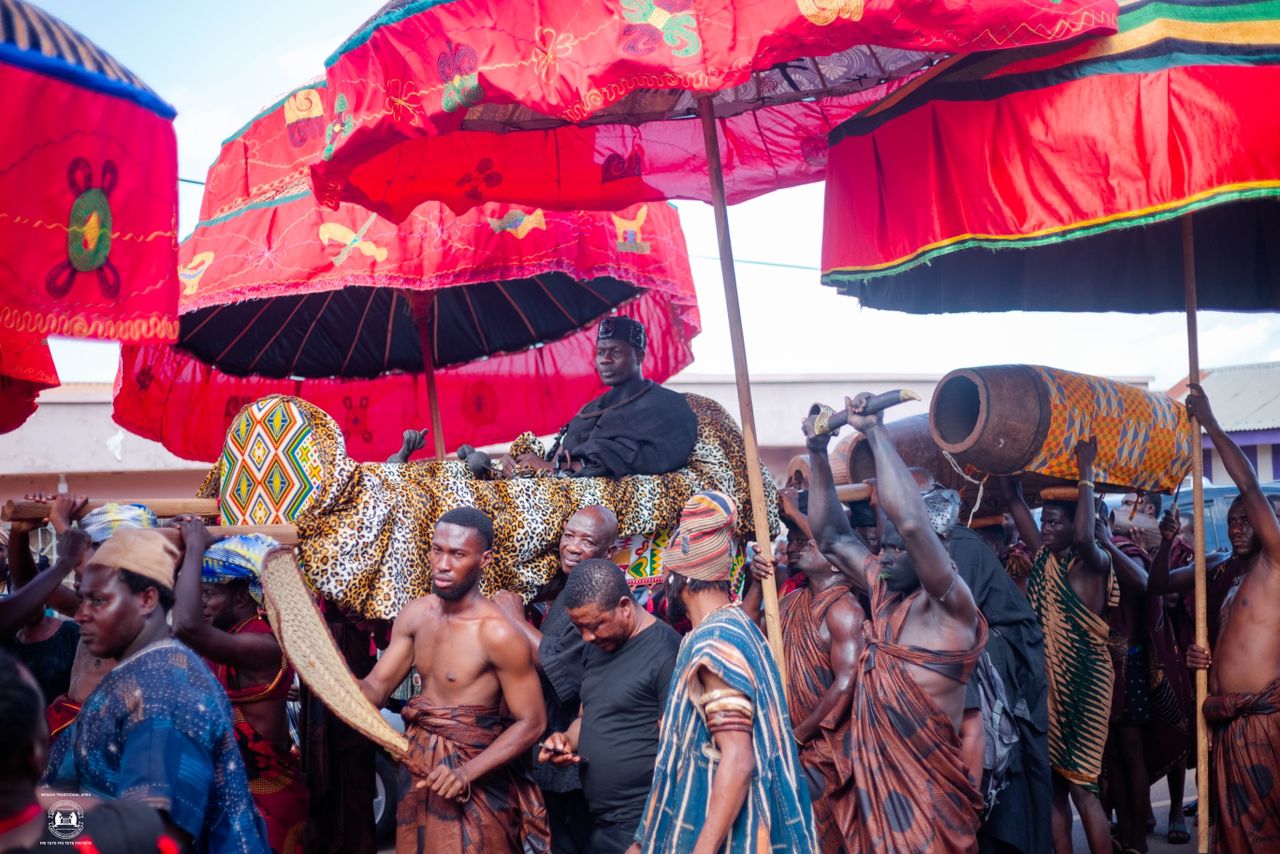
This direct descent makes the Wenchimanhene a grandson of Daasebre Osei Bonsu II, and his appearance in a palanquin during the funeral rites is a powerful symbol of that connection.
It reflects royal respect, heritage, and the continuity of lineage.
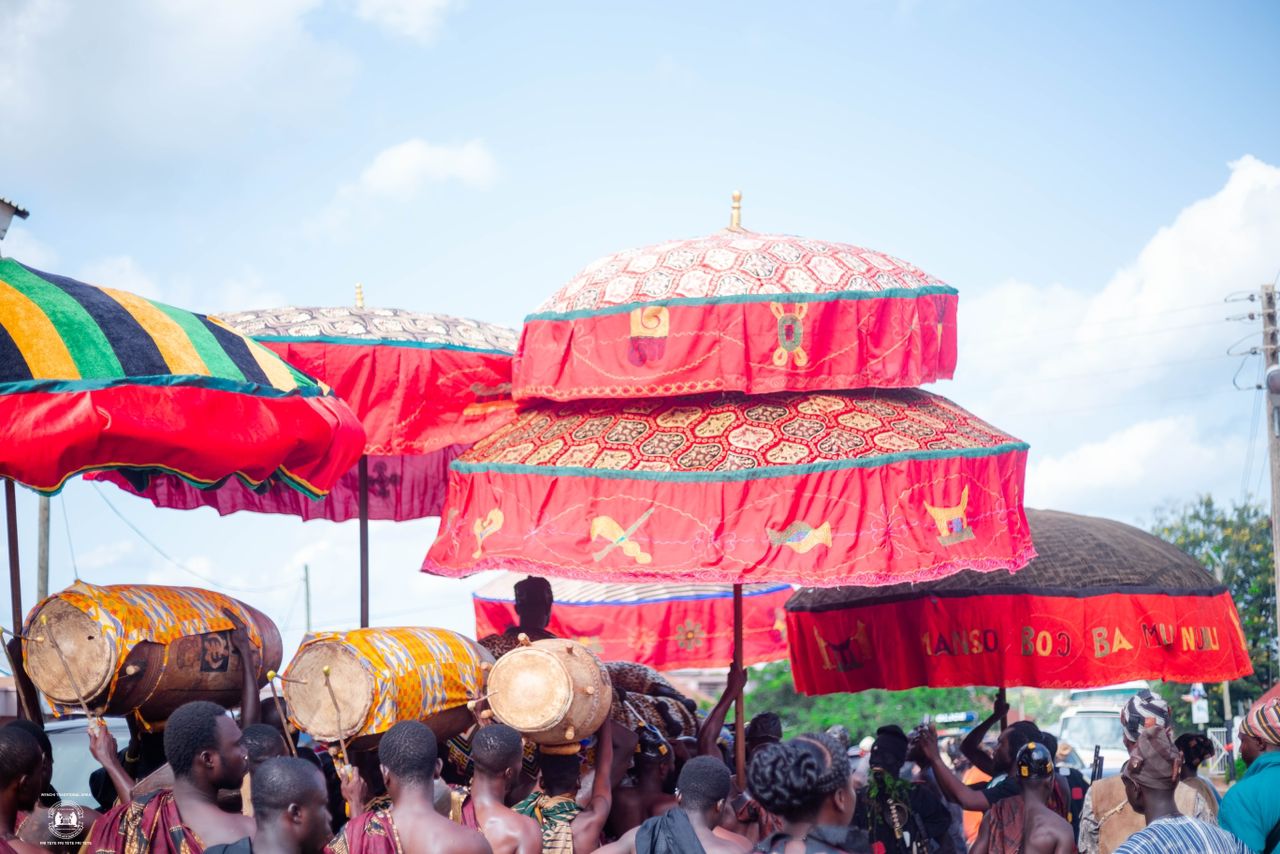
The Asantehene’s presence in a palanquin also underscores the cultural and historical importance of the occasion.
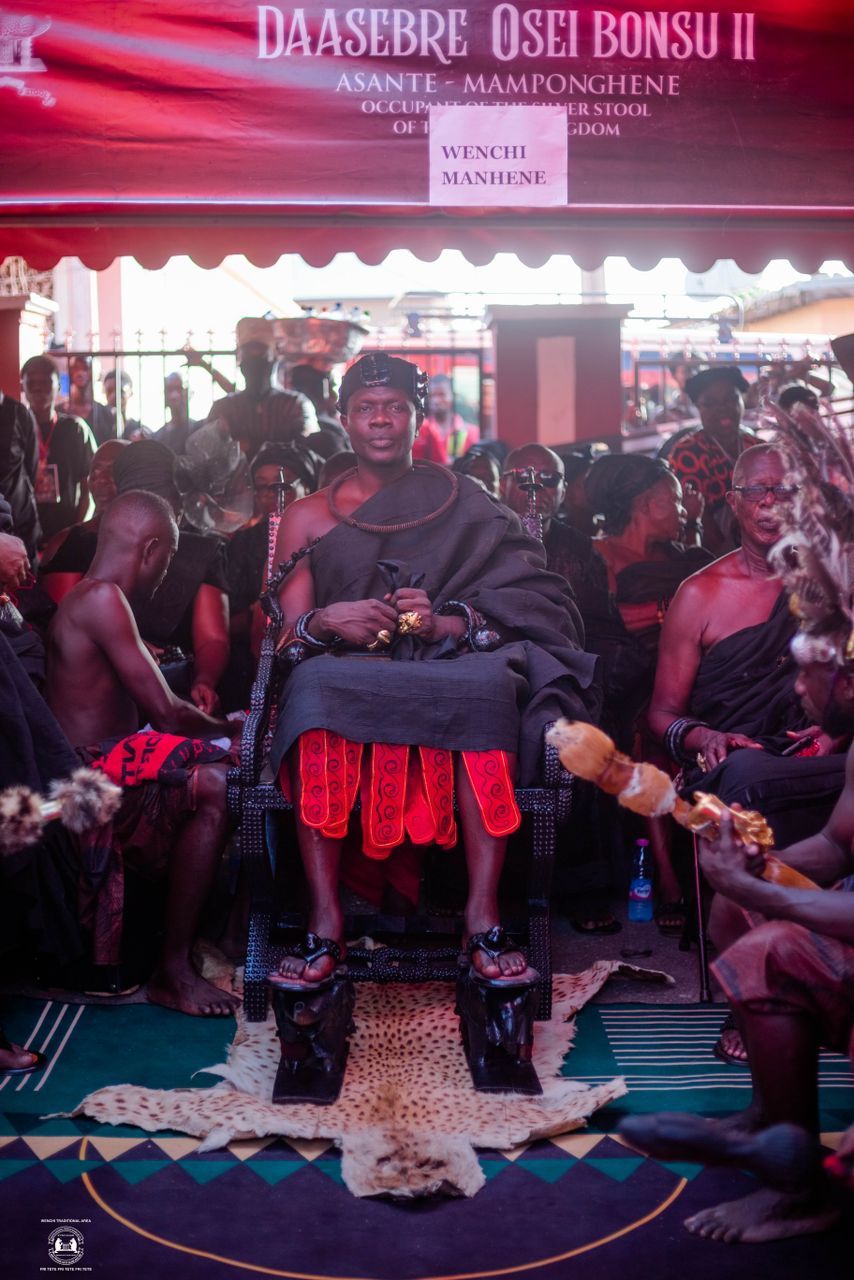
It affirms the enduring legacy of the Asante royal family and their unwavering commitment to upholding tradition and honoring their ancestors.
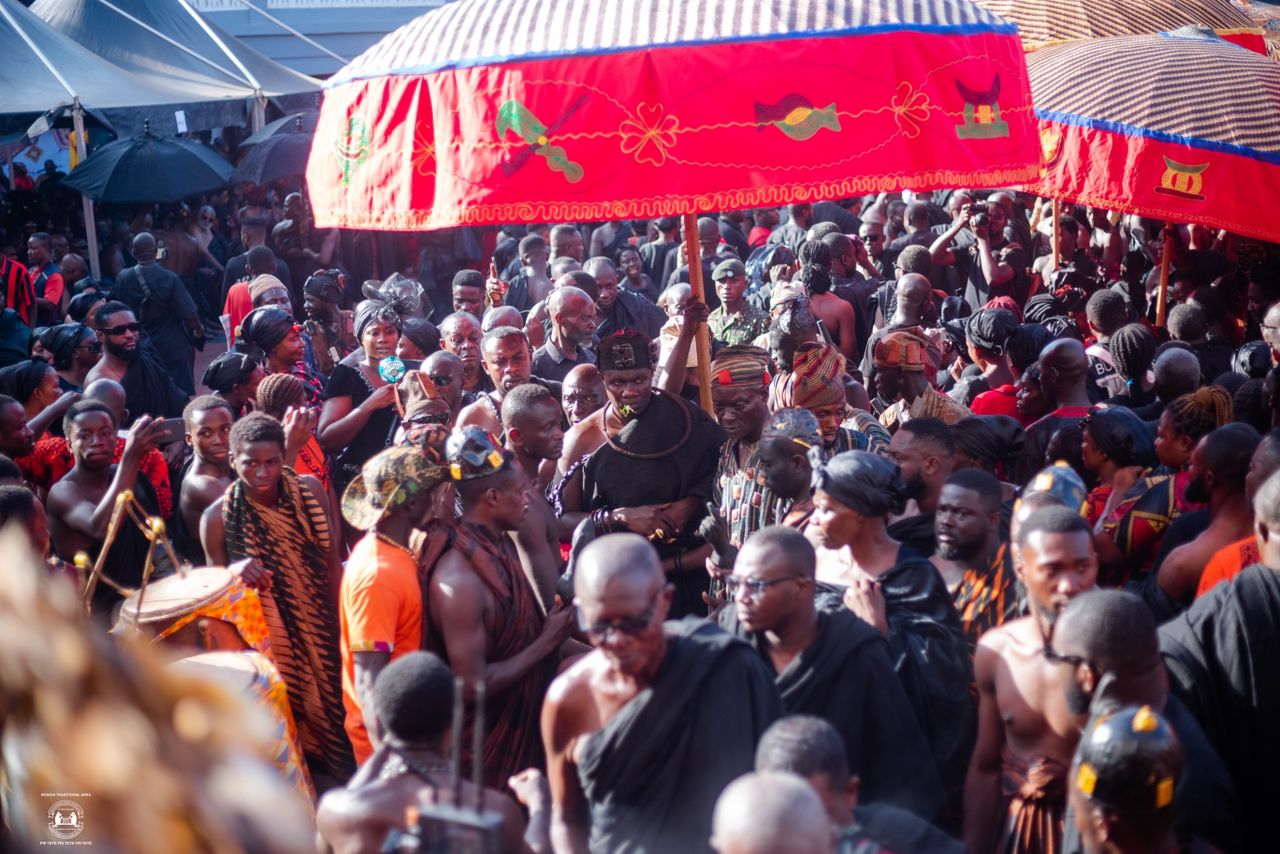
By participating in the royal procession in such a traditional and symbolic manner, both the Asantehene and Wenchimanhene demonstrated the strength of the bonds that unite the various royal houses—and the timeless customs that continue to define them.
